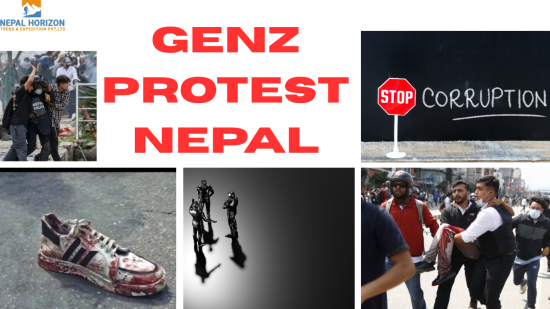Annapurna Base Camp Trek — Complete Guide | Nepal Horizon Trek
4th September 2025
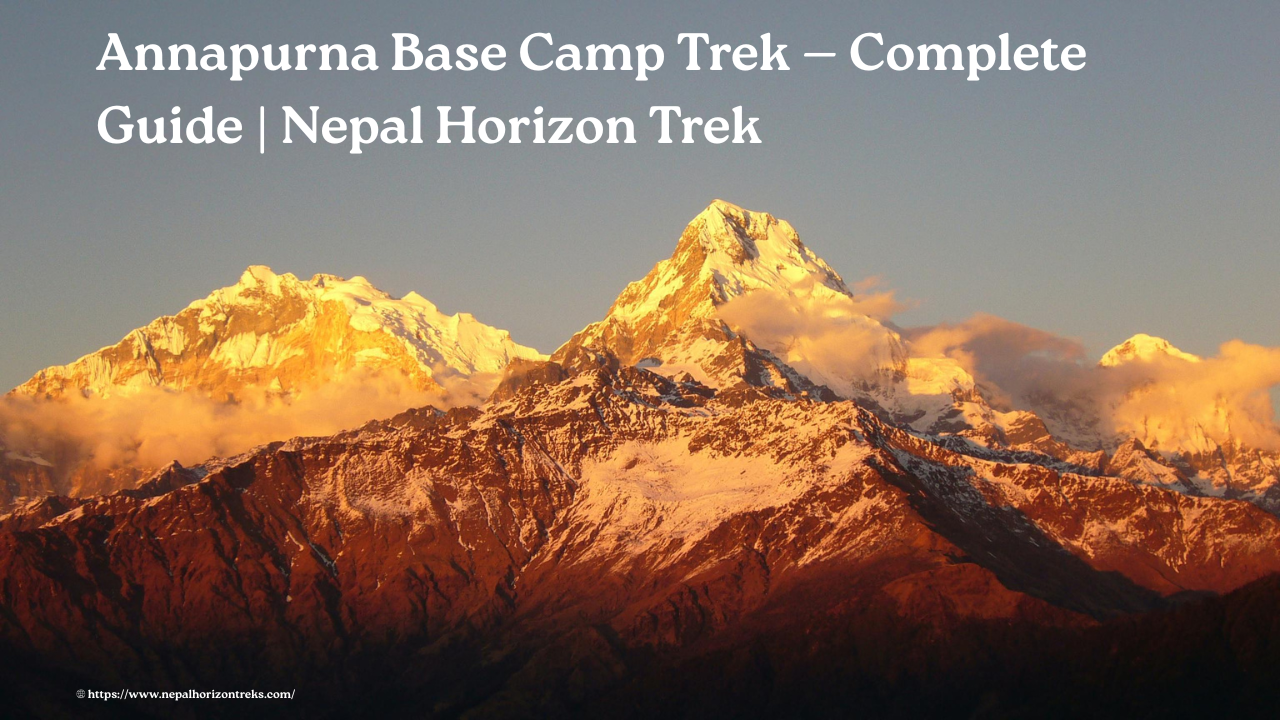
Annapurna Base Camp Trek — Complete Guide | Nepal Horizon Trek
If you’ve ever dreamed of standing inside a giant amphitheater of 7,000–8,000 m peaks while crisp mountain air fills your lungs, the Annapurna Base Camp (ABC) Trek should be on your bucket list. This guide from Nepal Horizon Trek gives you everything Google-searchers want to know about the ABC trek — altitude, distance, permits, how to get there, sample itineraries, packing, safety, costs, and practical tips to plan a smooth, unforgettable trek.
Quick facts briefly
- Highest point (Annapurna Sanctuary / ABC): ~4,130 m (13,550 ft).
- Typical duration: 7–12 days on the trail (common packaged itineraries run 8–12 days
- Estimated total trekking distance: ~110–115 km (round-trip) depending on starting/ending points and side-trips.
- Permits required: ACAP (Annapurna Conservation Area Permit) + TIMS for most foreign trekkers. Typical fees: ACAP ≈ NPR 3,000 + TIMS ≈ NPR 2,000 for foreign nationals (fees vary by nationality).
Why choose the ABC trek?
ABC is a classic Himalayan trek: shorter than the Annapurna Circuit or Everest Base Camp, but with dramatic, close-up views of Annapurna I, Annapurna South, Machhapuchhre (Fishtail) and others. The route travels from lush, sub-tropical valleys up through rhododendron forest into the high glacial amphitheater called the Annapurna Sanctuary — a rewarding mix of culture, biodiversity and alpine scenery.
Best time to go
- Autumn (Sept–Nov): Peak season — stable skies, clear views, comfortable daytime temps.
- Spring (Mar–May): Rhododendrons bloom; warm days and clear views — also a top season.
- Monsoon (Jun–Aug): Trail is green but wet; landslides and leeches possible — not ideal.
- Winter (Dec–Feb): Cold and snowy at higher camps; good for experienced trekkers who want solitude.
Permits, paperwork & fees
You must carry valid ID/passport and obtain:
- ACAP (Annapurna Conservation Area Permit) required for the Annapurna region.
- TIMS (Trekkers’ Information Management System) — usually required for independent trekkers.
Fees change occasionally and differ for SAARC nationals; current guide numbers put foreign fees around NPR 3,000 (ACAP) + NPR 2,000 (TIMS) — always check updated rates before travel.
Tip: If you book with a licensed guide company (recommended), your operator normally handles permits for you. Keep photocopies of passport and visa.
Getting there — start points & transport
Most trekkers reach ABC via Pokhara (short flight or 6–7-hour drive from Kathmandu). Common trailheads include Nayapul (popular) or Phedi/Pothana/Dhampus/Tikhedhunga depending on the route variant you pick. From Pokhara you’ll drive to the trailhead (1–2 hours typical) and begin trekking the same day on many itineraries.
Typical (sample) 10-day itinerary — classic, balanced pace
Day 0: Arrive Kathmandu — trek briefing.
Day 1: Drive/flight to Pokhara — arrange permits, final gear.
Day 2: Drive to Nayapul → Trek to Ghandruk (or Ulleri/Tikhedhunga).
Day 3: Ghandruk → Chhomrong.
Day 4: Chhomrong → Dovan/Bamboo.
Day 5: Bamboo → Deurali.
Day 6: Deurali → Machhapuchhre Base Camp (MBC) → Annapurna Base Camp (stay at ABC).
Day 7: Explore ABC → Descend to Bamboo or Jhinu (hot springs).
Day 8: Jhinu → Nayapul → Drive to Pokhara.
Day 9: Pokhara leisure + travel back to Kathmandu (optional).
Day 10: Buffer/flight home.
Many operators compress or extend days (7–14-day options exist). Allow at least one buffer day for weather or recovery.
Difficulty, fitness & acclimatization
ABC is moderate to moderately challenging: the trail is well-used and teahouse-equipped, but daily elevation gains plus walking hours demand fitness. You should be able to walk 5–7 hours a day on hilly terrain. Acute Mountain Sickness (AMS) risk is lower than higher treks but still real above 3,000 m — climb slowly, hydrate, and listen to your body. Carry Diamox only on physician’s advice. Consider a rest/acclimatization day if you feel symptoms.
Accommodation & food on the trail
Teahouses (simple lodges) provide a bed, blankets, and meals (dal bhat, noodles, soups, eggs, omelettes, porridge). Expect basic rooms, shared bathrooms near peak altitude, and limited hot-water availability at higher camps. Prices increase slightly with altitude, and menu variety is limited to ABC itself. Pack snacks and electrolytes for energy.
Typical costs & budgeting
- Permits: ~NPR 5,000 total for many foreign nationals (ACAP + TIMS) verify current fees.
- Guide & porter: Guides ~$25–40/day; porters ~$15–25/day (rates vary). Licensed agency packages often bundle transportation, permits, guides, some meals.
- Daily teahouse costs: $15–40/day depending on meals, tea/coffee and room standard.
- Transport & flights: Kathmandu–Pokhara domestic flight ~$80–150 one-way (seasonal) or tourist bus/drive cheaper.
Overall, a typical mid-range guided 10-day ABC trek can cost $500–$1,000+ per person, depending on group size, guide quality, and inclusions.
Packing list — essentials
- Insulated down jacket, warm hat, gloves
- Layering system: base layers, fleece, waterproof shell
- Sturdy trekking boots + good socks
- Trekking poles, sunglasses, sunscreen
- Headlamp + spare batteries
- Water purification (tablets/filters) & reusable bottle
- Basic first aid + altitude medication (after consulting a doctor)
- Lightweight sleeping bag (comfort to -5°C or lower for winter)
- Comfortable daypack (20–30 L) + waterproof cover
Safety tips
- Acclimatize slowly. Don’t rush ascents.
- Hydrate and eat enough calories — mountain days burn a lot of energy.
- Use local guides to know weather, trail conditions and emergency plans.
- Get travel & evacuation insurance that covers high-altitude trekking and helicopter rescue.
- Check weather: nights at ABC can be freezing; storms reduce visibility and increase risk.
Frequently Asked Questions (FAQs)
Q: How long is the trek to Annapurna Base Camp?
A: Most classic itineraries are 7–12 days on trial; total distance is roughly 110–115 km depending on entry/exit points.
Q: Do I need a guide/porter?
A: For independent, experienced trekkers it’s possible to go without one, but hiring a licensed guide is strongly recommended for permits, navigation, safety and local support.
Q: What permits are needed?
A: ACAP and TIMS are required for most foreign trekkers. Fees vary by nationality; recent figures show ACAP ≈ NPR 3,000 and TIMS ≈ NPR 2,000 for foreign nationals.
Q: Is it safe in monsoon?
A: Monsoon brings heavy rain, slippery trails, and landslide risk — spring and autumn are much safer and clearer.
Why book ABC with Nepal Horizon Trek?
We’re local experts who tailor itineraries to your fitness and schedule, provide licensed guides and porters, handle permits, and prioritize safety and sustainability. Choose flexible start dates, private or group treks, and post-trek recovery suggestions in Pokhara.
Final tips & next steps
- Book early for autumn and spring to lock in guides and domestic flights.
- Train with hill walks and weighted daypacks for 4–8 weeks before your trek.
- Bring cash (NRP) ATMs are available in Pokhara and some larger villages but not on the trail.
- Leave no trace: respect local culture and the fragile Annapurna Sanctuary.
Plan Your Annapurna Base Camp Trek with Us
Ready to begin your adventure? Let Nepal Horizon Treks handle the details so you can focus on the journey.
- Phone: Call Us: +977 9851183849
- Email: Email Us: info@nepalhorizontreks.com
- Location: Thamel, Chhetrapati, Kathmandu, Nepal
👉 Contact us today and let’s create your perfect Annapurna Base Camp experience!
Recent From Blogs

7th October 2025

27th September 2025
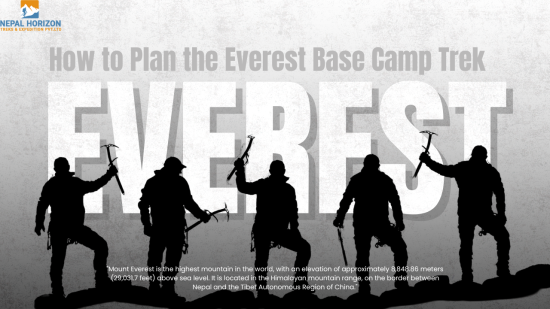
25th September 2025

22nd September 2025
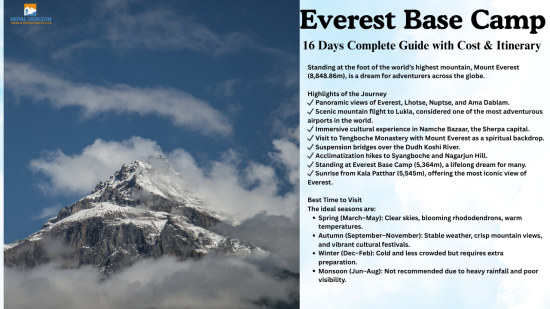
20th September 2025

17th September 2025
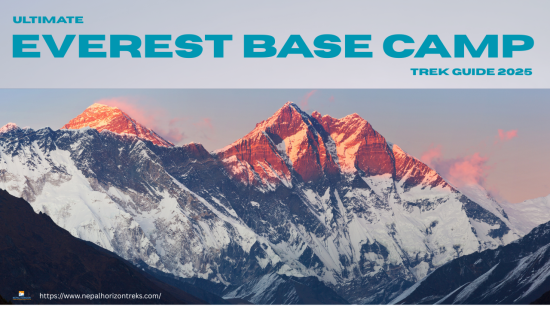
15th September 2025
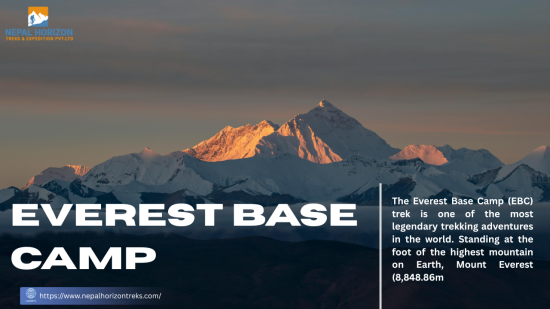
13th September 2025
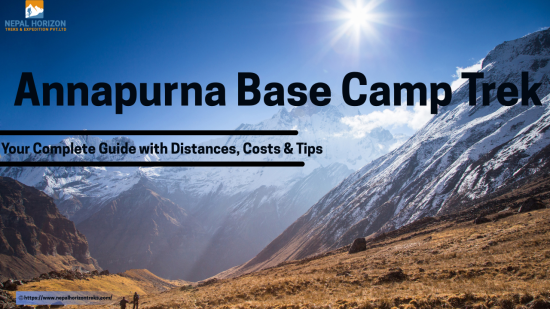
11th September 2025
